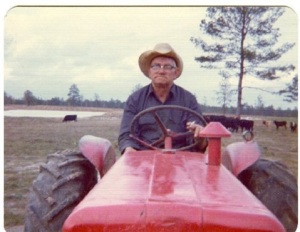Monday, November 8, 2010
Foraging Criteria
Monday, July 19, 2010
Lessons learned
Tuesday, July 13, 2010
Smooth Sumac
Friday, July 2, 2010
Of Blackberries and Chanterelles
This winter and spring were interesting as it was colder and wetter than usual. As a result, some things like fennel and spinach did not get planted; wet and cold ground takes the longest to dry out, so by the time they could have been planted it would have been too warm for them. Mache has proven to be extremely hearty and is one of the few vegetables that tolerates the cold weather quite well. This was my first year to grow it, and its steady growth has made it an excellent candidate for next year’s winter garden
On the foraging front right now there are several things going on. Blackberry season is in full swing, and dewberries are starting to ripen. Dewberries look like Blackberries, but they are bigger, juicier, and have bigger seeds. Wild ginger and sassafras are growing all over the place in the hollow. The red berries of the Smooth sumac are starting to develop their white coating of ascorbic acid. The green version of the Japanese herb shiso as well as Wild Mountain Mint also grow wild all along the road through the hollow.
It is also a great time of the year for foraging Smooth Chanterelle mushrooms. In this part of the country they start appearing in early June along creek banks, draws around the hollow, hillsides where water drains, and along the road through the hollow. The picking has been good for the past two weeks. The smooth chanterelles are so fragrant and delicious!
This year has also been one of reflection. As I get older I think more and more about money and family and the long term. My girlfriend Elizabeth has pushed me to not only think about farming as a way of life, but also from a business point of view - which I find particularly challenging as a farmer. She has also helped with the marketing aspects of running a business to help spread the word about the farm. I am becoming more and more determined to become a hard nosed businessman while maintaining my vision and ideals for the farm. This has involved taking a closer look at the garden from a business and profitability standpoint. What was in high demand last year? What should I eliminate from the growing roster this coming season? It is one of the major challenges of farming – to decide where to scale back and where to expand…all while staying in sync with mother nature.
I am extremely excited for one of the new ventures for the farm – egg production. The little chicks should be arriving in the next several weeks, so I am scrambling (pun intended) to prepare the tractors and fenced area where they will live. This is a joint effort initiated by a Birmingham based restaurant owner and chef who was looking for a local source for organic farm fresh eggs.
The farm is participating in a new farmer's market this year. It is in downtown Homewood at the corner of 18th Street S. and 29th Avenue. We are there every Saturday from 7:30- 12:30. Hope to see everyone there!
Hard work, determination, and some savvy planning will keep Hollow Spring Farm on the path to profitable sustainability and biodiversity.

Saturday, April 3, 2010
Farming from a cook's perspective- Part 1
One of the biggest catalysts for me is the chef Michel Bras. His book Essential Cuisine struck a deep chord in me. His talk about deep connections with the land through food and foraging really made me want to get the farm going.
Monday, February 15, 2010
Saturday, January 23, 2010
Advice from a Old Farmer
Your fences need to be horse-high, pig-tight and bull-strong.
Keep skunks and bankers at a distance.
Life is simpler when you plow around the stump.
A bumble bee is considerably faster than a John Deere tractor.
Words that soak into your ears are whispered…not yelled.
Meanness don’t jes’ happen overnight.
Forgive your enemies; it messes up their heads.
Do not corner something that you know is meaner than you.
It don’t take a very big person to carry a grudge.
You cannot unsay a cruel word.
Every path has a few puddles.
When you wallow with pigs, expect to get dirty.
The best sermons are lived, not preached.
Most of the stuff people worry about ain’t never gonna happen anyway.
Don ‘t judge folks by their relatives.
Remember that silence is sometimes the best answer.
Live a good, honorable life.. Then when you get older and think back, you’ll enjoy it a second time.
Don ‘t interfere with somethin’ that ain’t bothering you none.
Timing has a lot to do with the outcome of a Rain dance.
If you find yourself in a hole, the first thing to do is stop diggin’.
Sometimes you get, and sometimes you get got.
The biggest troublemaker you’ll probably ever have to deal with, watches you from the mirror every mornin’.
Always drink upstream from the herd.
Good judgment comes from experience, and a lotta that comes from bad judgment.
Lettin’ the cat outta the bag is a whole lot easier than puttin’ it back in
If you get to thinkin’ you’re a person of some influence, try orderin’ somebody else’s dog around..
Live simply. Love generously. Care deeply.
Speak kindly. Leave the rest to God.
–
Don’t pick a fight with an old man. If he is too old to fight, he’ll just kill you.
Monday, January 11, 2010
Fatliter










